- We're looking for artists. Direct message Dr. Watson for more info!
You are using an out of date browser. It may not display this or other websites correctly.
You should upgrade or use an alternative browser.
You should upgrade or use an alternative browser.
Touhou Project: General feats, lore, and discussion thread
- Thread starter AcidSoup
- Start date
More options
Who Replied?AcidSoup
Illustrious
Touhou 1: The Highly Responsive to Prayers
The first game of the series, and vastly different, even compared to the rest of the PC 98 era. Very little from this game really matters for both this thread and the rest of the series. There are about 2 notable things here. In the bad endings, the yin yang orb explodes, causing a big explosion that Reimu survives, telling the player "Try to no continue!!", as you only get a good ending in the games if you do not use continues (commonly referred to as a "1cc run", which I suck at). The yin yang orb and other objects such as Marisa's mini hakkero or Sagume's occult ball will get topic sections later
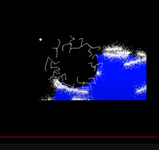
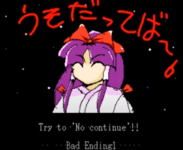
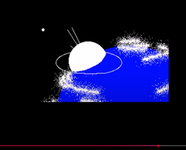
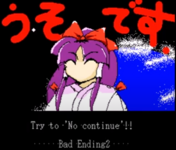
Since these are from bad endings, and it should be said right now; All endings matter, but only certain ones are "true endings". In other words, all endings have weight, but only one is the actual continuity. Such as in Scarlet Weather Rhapsody (10.5th game, a fighting game spin off), everything is brought up later. However, in other moments, such as in Undefined Fantastic Object (12th game, mainline), Marisa B route was directly called the "real ending" by ZUN himself. For the purpose of simplicity, instead of a complicated mess, this thread will take into account all endings, good and bad, whether it involves who truly resolved an incident or who did not finish the job. The full topic of canon as a whole will be gotten around to eventually, but part of it needs to be brought up now

The last Highly Responsive to Prayers image will be the background and Reimu's introduction. This is from the .txt manual the game has. The games all have .txt manuals and other .txt files. Notably, character profiles all come from txt files. There's other stuff such as Reimu can manually hit the yin yang orb at targets, but this and other features are more properly seen in the fighting games, or even have better stuff to them, so those will be left for later. Plenty also changed over the years too, but as a side thing (also canon related), PC 98 events are canon still, with one of the most recent words about this being in Yuuka Kazami's Strange Creators of Outer World article (a print work that will be gotten around to later)
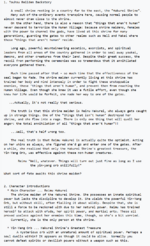
The first game of the series, and vastly different, even compared to the rest of the PC 98 era. Very little from this game really matters for both this thread and the rest of the series. There are about 2 notable things here. In the bad endings, the yin yang orb explodes, causing a big explosion that Reimu survives, telling the player "Try to no continue!!", as you only get a good ending in the games if you do not use continues (commonly referred to as a "1cc run", which I suck at). The yin yang orb and other objects such as Marisa's mini hakkero or Sagume's occult ball will get topic sections later




Since these are from bad endings, and it should be said right now; All endings matter, but only certain ones are "true endings". In other words, all endings have weight, but only one is the actual continuity. Such as in Scarlet Weather Rhapsody (10.5th game, a fighting game spin off), everything is brought up later. However, in other moments, such as in Undefined Fantastic Object (12th game, mainline), Marisa B route was directly called the "real ending" by ZUN himself. For the purpose of simplicity, instead of a complicated mess, this thread will take into account all endings, good and bad, whether it involves who truly resolved an incident or who did not finish the job. The full topic of canon as a whole will be gotten around to eventually, but part of it needs to be brought up now

The last Highly Responsive to Prayers image will be the background and Reimu's introduction. This is from the .txt manual the game has. The games all have .txt manuals and other .txt files. Notably, character profiles all come from txt files. There's other stuff such as Reimu can manually hit the yin yang orb at targets, but this and other features are more properly seen in the fighting games, or even have better stuff to them, so those will be left for later. Plenty also changed over the years too, but as a side thing (also canon related), PC 98 events are canon still, with one of the most recent words about this being in Yuuka Kazami's Strange Creators of Outer World article (a print work that will be gotten around to later)


Last edited:
AcidSoup
Illustrious
Touhou 2: Story of Eastern Wonderland
The second game of the series, where it became the vertical scrolling shoot-em-up / shmup / bullet hell whatever term you want to say that it is known for when it comes to being a game series. This game has not a lot to cover. First to cover is that in the Omake.txt, canonically it is Marisa who is telling you everything. That's the 2nd 4th wall break after Reimu telling you to do a no continue run. At the bottom of the screenshot, laser is a term used. There are many lasers throughout the series, and they contain properties too such as Marisa's coming from a device that has to do with heat, so there isn't much justification on that word being literal or not required. For bullet, the bullets used are all heavily varied, and can be dumbed down into a way to say projectile in the games. From sword slashes, to light orbs, to the concentrated power of a sun god, to many, many more. These will all be addressed later, mainly regarding the spell card system, a major part of both gameplay and lore (From the 6th game onwards, Embodiment of Scarlet Devil)
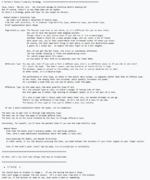
After this, you now have Reimu telling you about how to best go about getting a high score. This too comes from the Omake.txt
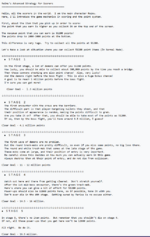
There is a minor stage 2 dialogue for Meira pointing out Reimu making an old reference. There's plentiful fourth wall breaks throughout the series, but I think it deserves some amount of showing since it's varied in who does it. Fourth wall stuff generally does not add to much, but there are instances of it mattering, so these are here for the sake of showings and justification and such. As said a few times now, such things will be addressed later. There's also Reimu calling the enemies not hard (stage ones). There's also an entire conversation between Reimu and Marisa directly after stage 3 if you are playing the trial version that can be summarized as them saying you need to play the full version to go further. This is a reoccurring fourth wall break in the games where you either play the full version or get told to play the full version

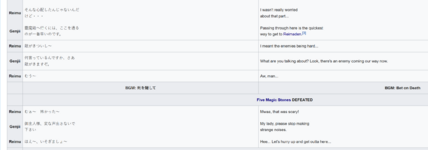
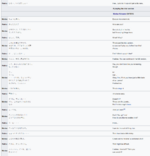
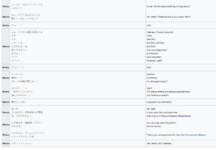
Moving on, we go to the full version of Story of Eastern Wonderland. First and last comes Reimu sensing evil, and realizing who it is. Sensing stuff is another reoccurring thing for more than one person. There is only one more SOEW feat that might be considerable as generally applicable (sufficiently strong vengeful spirits escaping sealing, Mima in specific doing the feat), but it only matters for one total other person (Mizuchi Miyadeguchi), and I did not read Cheating Detective Satori fully yet, which a full read from the bottom up will be done when the print works are gotten around to. Nothing else from this game is generally applicable
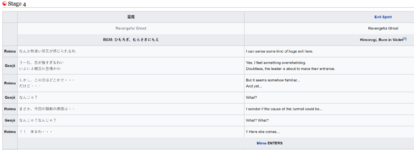
The second game of the series, where it became the vertical scrolling shoot-em-up / shmup / bullet hell whatever term you want to say that it is known for when it comes to being a game series. This game has not a lot to cover. First to cover is that in the Omake.txt, canonically it is Marisa who is telling you everything. That's the 2nd 4th wall break after Reimu telling you to do a no continue run. At the bottom of the screenshot, laser is a term used. There are many lasers throughout the series, and they contain properties too such as Marisa's coming from a device that has to do with heat, so there isn't much justification on that word being literal or not required. For bullet, the bullets used are all heavily varied, and can be dumbed down into a way to say projectile in the games. From sword slashes, to light orbs, to the concentrated power of a sun god, to many, many more. These will all be addressed later, mainly regarding the spell card system, a major part of both gameplay and lore (From the 6th game onwards, Embodiment of Scarlet Devil)

After this, you now have Reimu telling you about how to best go about getting a high score. This too comes from the Omake.txt

There is a minor stage 2 dialogue for Meira pointing out Reimu making an old reference. There's plentiful fourth wall breaks throughout the series, but I think it deserves some amount of showing since it's varied in who does it. Fourth wall stuff generally does not add to much, but there are instances of it mattering, so these are here for the sake of showings and justification and such. As said a few times now, such things will be addressed later. There's also Reimu calling the enemies not hard (stage ones). There's also an entire conversation between Reimu and Marisa directly after stage 3 if you are playing the trial version that can be summarized as them saying you need to play the full version to go further. This is a reoccurring fourth wall break in the games where you either play the full version or get told to play the full version




Moving on, we go to the full version of Story of Eastern Wonderland. First and last comes Reimu sensing evil, and realizing who it is. Sensing stuff is another reoccurring thing for more than one person. There is only one more SOEW feat that might be considerable as generally applicable (sufficiently strong vengeful spirits escaping sealing, Mima in specific doing the feat), but it only matters for one total other person (Mizuchi Miyadeguchi), and I did not read Cheating Detective Satori fully yet, which a full read from the bottom up will be done when the print works are gotten around to. Nothing else from this game is generally applicable

Last edited:
AcidSoup
Illustrious
Touhou 3: Phantasmagoria of Dim.Dream
The third game of the series, and where Marisa starts getting separate routes. First multiplayer one, but nothing really matters for the purpose of this thread. Read every translation, watched videos of scenes and gameplay, and read the music comments (been doing this for each game so far), but there's nothing that really matters (or if it does there's something else better left to be brought up). There's some stuff like Chiyuri Kitashirakawa's attack names like "time cutter" and "dimension wall cutter" but there isn't much defined here (although the spell card rules did not exist before Touhou 6 in universe, during the first 5 games, there was nothing in place to prevent an outright murder during a fight nor restrict characters from unleashing some crazy power on the other, but again, not much is defined here, unlike with the spell card system, where everything is defined to a degree). Due to how little Touhou 3 has for the thread, Touhou 4 will get a post in the same reply for a minimization of excess
Touhou 4: Lotus Land Story
The fourth game of the series, and the first to use the word "Gensokyo". First and last thing is a few more fourth wall breaks. Blame a certain few characters from the Windows era (6th game onwards) for why just a few fourth wall breaks need a bunch of images. Will not be posting something if it's essentially the same thing but in another characters route, as that is just repetitive excess (as such a thing becomes prevalent from here onwards).
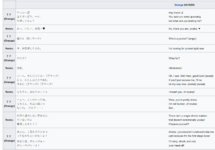

(Game walkthrough in the Omake.txt canonically being done by Reimu)

The third game of the series, and where Marisa starts getting separate routes. First multiplayer one, but nothing really matters for the purpose of this thread. Read every translation, watched videos of scenes and gameplay, and read the music comments (been doing this for each game so far), but there's nothing that really matters (or if it does there's something else better left to be brought up). There's some stuff like Chiyuri Kitashirakawa's attack names like "time cutter" and "dimension wall cutter" but there isn't much defined here (although the spell card rules did not exist before Touhou 6 in universe, during the first 5 games, there was nothing in place to prevent an outright murder during a fight nor restrict characters from unleashing some crazy power on the other, but again, not much is defined here, unlike with the spell card system, where everything is defined to a degree). Due to how little Touhou 3 has for the thread, Touhou 4 will get a post in the same reply for a minimization of excess
Touhou 4: Lotus Land Story
The fourth game of the series, and the first to use the word "Gensokyo". First and last thing is a few more fourth wall breaks. Blame a certain few characters from the Windows era (6th game onwards) for why just a few fourth wall breaks need a bunch of images. Will not be posting something if it's essentially the same thing but in another characters route, as that is just repetitive excess (as such a thing becomes prevalent from here onwards).


(Game walkthrough in the Omake.txt canonically being done by Reimu)

AcidSoup
Illustrious
Touhou 5: Mystic Square
The fifth game of the series. Not a lot to cover here, however, an incredibly backwards feat happens to be here (applicable to top tiers as a whole essentially). First off, just a simple fourth wall break, and then another with Yuuka blaming you for her failure in Yuuka's bad ending. However, we move on to stage stage 5 and 6. Here, Reimu (and the other playable characters, specifically being Marisa, Mima, and Yuuka) face Shinki, the creator of Makai. Originally, it was called a world, had stars, a constellation, and a galaxy arm. All of these, you can question if they really are what they look like. Yet the constellation shapes make it a little less "is it really" and more of looking to be what it seems like. However, much later down the line, Makai got called infinite in size by Minamitsu Murasa in Touhou 12: Undefined Fantastic Object. Of course since this is much, much later in the series (over a decade after Mystic Square was released), it is left to argued if it should matter for characters from far in the past that don't get to see the light of day again (unless you are Yuuka and Alice. Bring back Mima). Regardless, it still deserves to be here. This will also be fully gone into detail when the Touhou Project cosmology is gotten around to as its own topic / subject

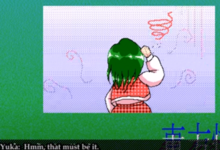
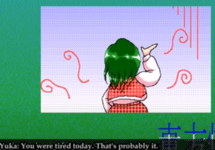

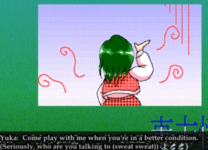


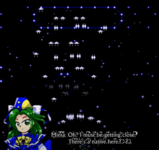
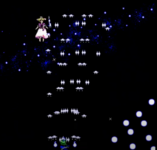

The fifth game of the series. Not a lot to cover here, however, an incredibly backwards feat happens to be here (applicable to top tiers as a whole essentially). First off, just a simple fourth wall break, and then another with Yuuka blaming you for her failure in Yuuka's bad ending. However, we move on to stage stage 5 and 6. Here, Reimu (and the other playable characters, specifically being Marisa, Mima, and Yuuka) face Shinki, the creator of Makai. Originally, it was called a world, had stars, a constellation, and a galaxy arm. All of these, you can question if they really are what they look like. Yet the constellation shapes make it a little less "is it really" and more of looking to be what it seems like. However, much later down the line, Makai got called infinite in size by Minamitsu Murasa in Touhou 12: Undefined Fantastic Object. Of course since this is much, much later in the series (over a decade after Mystic Square was released), it is left to argued if it should matter for characters from far in the past that don't get to see the light of day again (unless you are Yuuka and Alice. Bring back Mima). Regardless, it still deserves to be here. This will also be fully gone into detail when the Touhou Project cosmology is gotten around to as its own topic / subject










AcidSoup
Illustrious
Touhou 6: Embodiment of Scarlet Devil
The sixth game in the series, and where it entirely changes in many ways, including moving to Windows and introducing the spell card system, a major part of both gameplay and lore. There is some more here than everything previous, but it gets backwards when other works that make reference to EOSD are brought up, but those will be saved for when those works have their coverage (it will be specified if something has a tie back to a previous work for clarity). First thing is the scarlet mist itself of the "Scarlet Mist Incident". This mist was made by Remilia Scarlet, main antagonist of the game and a reoccurring character down the line. As seen here, the mist will kill a normal human in a half hour, and if you are simply less ordinary, also a half hour. Anyone who is not a human should be just fine from this (and you can argue Reimu and Marisa too), especially including fairies and yokai, as Cirno was unphased by the mist (a fairy) and three people who live with Remilia are yokai (Meiling, Patchouli, Flandre). It should be specified that this only applies to the center point of the mist, or where it is most strong (and it says it right there). After the mist, and lastly, there's a few more fourth wall breaks (again).





The sixth game in the series, and where it entirely changes in many ways, including moving to Windows and introducing the spell card system, a major part of both gameplay and lore. There is some more here than everything previous, but it gets backwards when other works that make reference to EOSD are brought up, but those will be saved for when those works have their coverage (it will be specified if something has a tie back to a previous work for clarity). First thing is the scarlet mist itself of the "Scarlet Mist Incident". This mist was made by Remilia Scarlet, main antagonist of the game and a reoccurring character down the line. As seen here, the mist will kill a normal human in a half hour, and if you are simply less ordinary, also a half hour. Anyone who is not a human should be just fine from this (and you can argue Reimu and Marisa too), especially including fairies and yokai, as Cirno was unphased by the mist (a fairy) and three people who live with Remilia are yokai (Meiling, Patchouli, Flandre). It should be specified that this only applies to the center point of the mist, or where it is most strong (and it says it right there). After the mist, and lastly, there's a few more fourth wall breaks (again).





